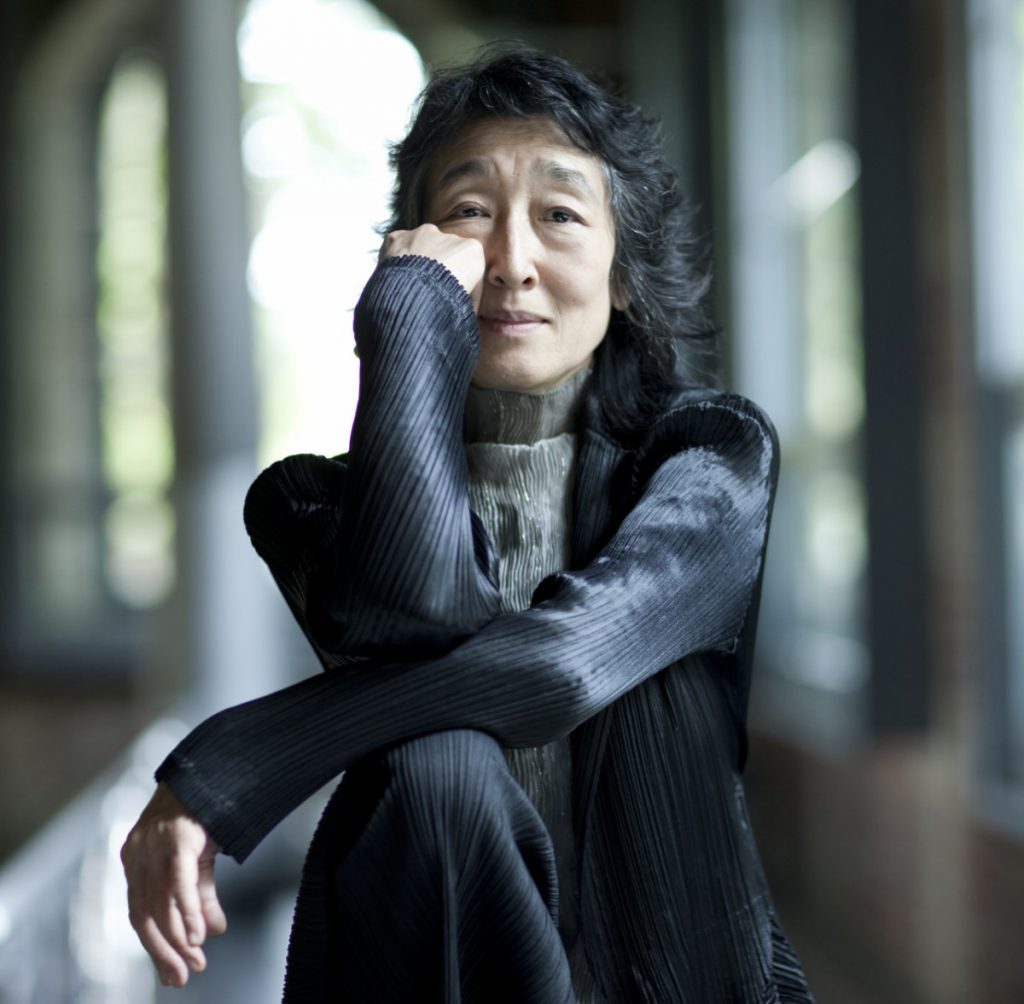Uchida takes Carnegie audience along on an intimate Schubert journey

Mitsuko Uchida performed Saturday night at Carnegie Hall. Photo: Justin Pumfrey
To say that pianist Mitsuko Uchida gave a memorable performance of Schubert sonatas Saturday night doesn’t seem quite right.
“Performance” implies going big, projecting your personality out to the back row. In classical music, it also means interpreting something that was written down (in Schubert’s case) 190 years ago and that has remained unchanged ever since.
But an Uchida “performance” is typically an introspective affair, with listeners leaning forward to catch a whiff of what’s on her mind as she plays, and Saturday’s Carnegie Hall recital was no exception.
The feeling of innerness took on an even greater dimension Saturday. For much of the time, as the pianist’s fingers caressed or propelled the keys, the idea of centuries-old notes on paper seemed to melt away, leaving the illusion that she was exploring, making up the music as she went along.
This sensation was not to be confused with merely arbitrary or willful interpretation. It was more like witnessing musical thoughts being born like birds and taking flight.
This almost out-of-body experience, ending with Schubert’s last and greatest work in the genre, the Sonata in B-flat major, D. 960, was to have been the culminating event as Uchida traversed all of the composer’s sonatas over a Wagnerian span of four evenings. Two recitals arrived on schedule last season, but the third, scheduled for last month, had to be postponed till June.
So the audience had, in effect, Götterdämmerung on Saturday, and will double back for Siegfried next month. For a few minutes Saturday night, there was some question even about that, as, perhaps remembering last week’s postponement, the near-capacity Carnegie audience waited quietly a quarter of an hour past the appointed time for the artist to appear.
But appear she did, launching brightly into the skipping theme of the Sonata in A minor, D. 537. The exposition’s energy was soon dissipated in modulations to remote keys, like a stream spreading out in rocky shallows, until one was left with just a rumble of a closing theme in the lower register. (Nature metaphors seem to come readily when describing this artist’s playing.)
The smattering of applause that greeted the movement’s sudden, brusque coda indicated that, despite Uchida’s reputation as a connoisseur’s pianist, there were also some newcomers present who hadn’t yet learned “the rules.” For the rest of the evening, silence reigned between movements.
The pianist’s rendering of the serenade-like Allegretto quasi andantino grew more intimate with each return of its tender theme, dwindling to a whisper at the close.
In Uchida’s hands, the opening rush of scales in the D. 537 finale was a gentle signal for attention, and the volatile Allegro vivace spun out easily, always looking for a quiet spot to pause and reflect, as if pondering its next move. Bursts of forte and flashing fingerwork stood out in a whimsical landscape.
The much later “Reliquie” Sonata in C major, D. 840, found Schubert painting on a wider canvas, and completing only the first two of the sonata’s projected four movements. Uchida’s response to the composer’s larger conception was not to play more grandiosely, but to take her time contemplating and assembling the first movement’s diverse themes, adjusting their dynamic or their mood at each reappearance, as if she were not interpreting a score but fashioning something from molten material.
The C minor Andante was more heterogeneous yet, buttery legato passages bumping against shaped détaché lines and delicate high staccato chords. Emphatic statements quickly yielded to quiet musings. The pianist always played on a curve, with intention—but the intention seemed to change second by second. Once again, everything seemed to be happening for the first time. The pianissimo ending seemed to beg for continuation and closure—that is, the two movements Schubert never finished.
The theme of the B-flat Major Sonata, D. 960, was not just pianissimo as marked, but seemed to emerge from a fog, its singing line clearly audible. Its return in the exposition repeat was still more pianissimo, yet presented as something known, not something new—the subtlest of interpretive differences.
Despite the variety of its materials, the long first movement seemed to broaden steadily outward until it reached a point of stasis, to which Uchida gave the character of a thoughtful moment in a Chopin ballade. The development section was like an ambiguous dream, the main theme appearing with a sad expression before more modulations bore it away.
The pianist “sustained” the Andante sostenuto at a pianissimo dynamic and a daringly slow tempo, which managed to sound both steady and hesitant at the same time. Later, a tender melody like a lied floated over tapping repeated notes or a soft swirl of 16th-notes.
The scherzo bubbled with its saucy parody of the first movement’s noble theme. Emphasizing fluidity over aggression, the pianist nevertheless scored some points with syncopated accents in the trio.
The sense of flow continued even in the wayward theme of the finale, with its enigmatic stop sign on a single note. A second theme over whirling sixteenths picked up speed merrily, only to yield to a minor-key burst of chords and scales, a stream hitting the rapids. Smoother waters followed, gliding down to a single page of exuberant Presto that seemed to say, “You can clap now.” And did they ever.
The rescheduled third recital in Mitsuko Uchida’s cycle of the complete Schubert sonatas will take place 8 p.m. June 18 at Carnegie Hall. carnegiehall.org; 212-247-7800.



